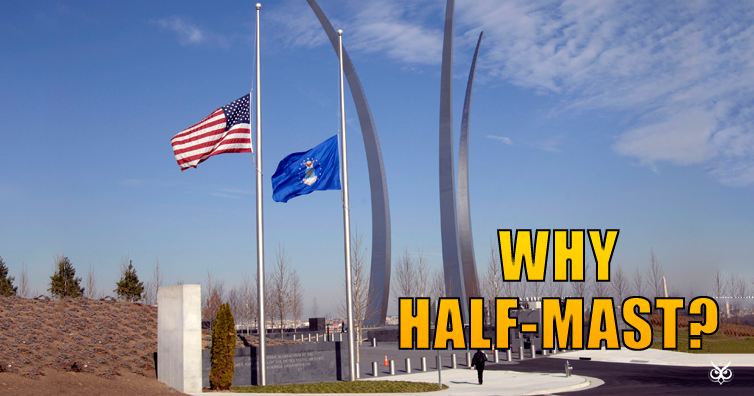We all know that in times of national mourning, orders may be given that all flags on public buildings should fly at half-staff. But have you ever wondered how did this tradition start?
Well, we certainly did (we wouldn’t be called useless info junkies if we weren’t excited for this kind of stuff), so we decided to have a look.
Here’s what we found. (the article continues after the ad)
Even though we know that the first ever record of a flag flown at half-staff was in 1612 when a British ship returned to London with its flag at half-mast to honor its late captain, it’s really tough to say what actually started this tradition.
According to the most popular theory, this was done in order to make room for the invisible flag of Death. By lowering the Union Jack, the British sailors were actually making room so that the flag of Death could fly above the empire’s flag. This explanation makes sense as according to the British tradition, the flag flying at half-staff was lowered exactly one flag’s width. However, this changed over the years and now the British Flag Protocol defines half-mast as follows: “half-mast means the flag is flown two-thirds of the way up the flagpole”.
In the United States, the following rules apply (even though there is no specific position for the half-staff): “the flag, when flown at half-staff, should be first hoisted to the peak for an instant and then lowered to the half-staff position. The flag should be again raised to the peak before it is lowered for the day.”
If you like what you read, then you will definitely love this one: Why A White Flag Is Used As A Symbol Of Surrender?
Photo: Creative Commons
Photoshop: I’m A Useless Info Junkie
Sources: When should flags fly at half-staff? | British Flag Protocol | General Flag Display



